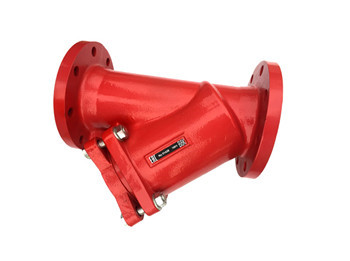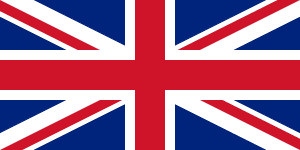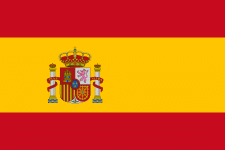What is a Back Pressure Valve and How Does it Work
A Back Pressure Valve is a type of valve that is commonly used to regulate the flow of fluids within a pipeline system. It works by maintaining a constant back pressure on the downstream side of the valve.
When the upstream pressure exceeds the set point of the valve, it opens to allow fluid to pass through the valve and into the downstream system. However, once the pressure drops below the set point, the valve closes to prevent the backflow of fluid into the upstream system.
Back Pressure Valves are commonly used in a variety of applications, including controlling the flow of steam, controlling the pressure of fluids in a hydrostatic test, or protecting downstream equipment from the negative effects of excessive differential pressure.
A back pressure valve, also known as a pressure sustaining valve, is a type of valve designed to maintain a constant pressure upstream of the valve. It works by adjusting the valve's opening to restrict or allow fluid flow, depending on the pressure conditions upstream and downstream of the valve.
When the pressure upstream of the valve exceeds a set point, the valve will open slightly to allow fluid to escape, reducing the pressure to the desired level. When the pressure upstream drops below the set point, the valve will close, preventing any more fluid from escaping and maintaining the desired pressure.
Back pressure valves are commonly used in many industrial applications, such as water treatment plants, oil and gas refineries, and chemical processing facilities, where precise pressure control is critical for safety and operational efficiency.
A back pressure valve is a specific type of control valve that is primarily used to hold pressure on production vessels. These vessels include separators, treaters, and free water knockouts. Its function is to regulate the upstream pressure, which helps in keeping the pressure within a specified limit. This is done by preventing flow from entering the tank unless necessary to relieve spikes in upstream pressure. When fluid pressure at the inlet increases, the back pressure regulator utilises this increasing pressure to provide counterforce under the sensor.
This opposes the leading force from the top, which keeps the pressure under control. A back pressure regulator remains closed most of the time, except when necessary, to prevent any mishaps. This valve is a safety device that prevents hot water tanks from exploding if it should experience high pressure. Overall, the back pressure valve is an essential component in regulating pressure and ensuring the safe operation of production vessels.

The Benefits of the Back Pressure Valve
The Back Pressure Valve is a critical component in many industrial applications, providing a variety of benefits to professionals and their systems. First and foremost, the valve serves as a safety device that regulates pressure upstream of its inlet, ensuring system integrity and preventing overpressure events that could cause damage or catastrophic failure. Additionally, back pressure valves can enhance pumping system performance by applying a continuous back pressure, which not only improves metering precision but also acts as an anti-siphon mechanism to prevent fluid suction from damaging the pump.
The Back Pressure Valve is a particularly effective solution that enables operators to keep a predetermined column of fluid in the tubing string, regardless of hydrostatic pressures. Overall, the Back Pressure Valve offers an essential service to professionals in a range of industries, providing precise control and protection to their systems.
What is the difference between back pressure valve and pressure control valve?
A back pressure regulator and a pressure control valve serve similar purposes, but they differ in design and functionality. A back pressure regulator is continuously moving and has pressure sensors to react accordingly, while a pressure relief valve is designed to act as a safety feature to release pressure buildup. The back pressure regulator must be installed at the end of a piping system to work effectively, while a pressure control valve can be placed anywhere in the system.
Back pressure regulators are suited for maintaining a defined pressure upstream of their inlet, while pressure control valves are excellent for controlling the outlet or what's downstream of the valve. The back pressure regulator protects the infrastructure before the instrument, while the pressure control valve controls the pressure before the instrument itself. In conclusion, both devices are essential but serve different purposes depending on the application.
What are the common problems associated with a faulty back pressure valve
A back pressure valve is an essential component in many industries where controlling the flow of fluids is crucial. A faulty back pressure valve can cause a number of problems that impact the performance and efficiency of a system. Common signs of a faulty back pressure valve include engine performance issues, excessive smoke or soot from the exhaust, and the Check Engine Light coming on. Additionally, too much exhaust back pressure can cause exhaust valve failure, weakened exhaust valves, and damage to internal components.
Excessive back pressure can also mimic late valve timing, leading technicians to replace timing chains or belts unnecessarily. To rectify these problems, prompt identification and resolution of faulty back pressure valves are critical to prevent significant engine damage and ensure optimal functioning of industrial systems.
Applications of Back Pressure Valves
Back pressure valves are used in a variety of applications in the oil and gas industry. Some of the most common applications include:
Wellheads: Back pressure valves are often used in wellheads to maintain the desired pressure level in the production tubing.
Production lines: Back pressure valves are used in production lines to regulate the flow of fluids and prevent over-pressurization.
Pipelines: Back pressure valves are installed in pipelines to regulate the flow of fluids and maintain a constant pressure.
China Reversing Valve Manufacturer
Shijiazhuang Jinjieber Imp.& Exp. Co. Ltd was established in 1996.Authorized by the National Department of Foreign Economic Relations and Trade, Shijiazhuang Jinjieber Imp.& Exp. Co. Ltd specializes in hardware, construction materials, steel, light industrial and chemical products, machinery, and electronic equipment.We have five main kinds of products that include:1) metal products (made by casting, stamping, and forging with materials of gray iron, ductile iron, malleable iron, steel, stainless steel, and so on); 2)building material;3)stone (such as marble, granite ad slate with different sizes);4)home and office appliances;5)crafts & gifts.Based on the cooperation, we established long-term stable, and trustful relationships with companies in Europe, America, and the Middle-East area.
 English
English
![]()
 English
English
 Russian
Russian
 French
French
 Spanish
Spanish













